
94 I VA N T U R E T S K Y Y CO LO U R A S L A BYRI NT H
2018201 9
95

B
E T W EE N HI S T O R Y AN D I M A GI N ATIO N
97 « » –., . 30 , , , . ,,
Because of his energetic nature and exuberant enthusiasm for classical ar ts it is difficult for Ivan Turetskyy to stay in the frame of one specialization. To say it in one word– a man of Renaissance époque. He is known as an intellectual collector and a famous heraldist, one of the authors of the Coat of Arms of independent Ukraine and the new coat of arms of Lviv. He has been designing state awards, city and private emblems, Ukrainian and Austrian postage stamps, creating ex-LIBRIS’s for cultural elite and establishment. He creates unique collections of playing cards. Ivan Turetskyy is a vir tuosic graphic ar tist devoted to the elegance of Secession. N ATAL I A K O SM O LYN S K A RT HI S T OR I A N ,
But rst of all, there is painting in his life where he is trying to combine his two passions-Baroque and Abstraction. His paintings by their stylistics remind of imaginative portraits of Arcimboldo, and Boccioni’s, Bogomasov’s, Exter’s Futuristic experiments. The author’s idea is to create a kind of 3D-crossword of colour and texture, in which anyone, considering their mood, perception of world and power of imagination would be able to see their own interpretation of story. As the author says: “I don’t want to accentuate a story. I want a viewer to read it himself. As when you are looking at an ornament, shadows clouds… and seegures there. The most exciting thing for me is the game of light, when you, for example, enter an old cathedral where the rays of sun are coming through stained glass. And when with décor, gilding, carving and murals together it creates phenomenal light textures. It is impossible to paint. Though I am doing my best”.
A distinct par t of Ivan Turetskyy ’s painting is his expressive thrilling literally perceptible to one ’ s ear, musicality. Music here is more than a source of emotional inspiration. Ivan Turetskyy is attentively seeking rhythmic self-wor th in ever y painting (as in his work
“The Rhythms of Jazz”) which on its own duty is defining the plasticity of form. But on the parity terms with colour
The activity of colouring is intense, almost pathetic. With its help the author attains a stained glass’ glow, builds multilayer metaphors of senses and complex emotional emphasis as in “Sails of Time”. He is playing with nuances and contrasts constructing a new quality of reality full of passions and vital power of being.
The artist o en compares his works to labyrinths of colour out of which a viewer has tond the exit.
Ivan Turetskyy ’s works bring to mind fascinating pictures of kaleidoscope, when coloured glasses form a new optical illusion because of the slightest move. Depending on how long, what aspect, in what lighting one views, plenty images can be seen.
But falling out of reality into full cosmogenic meaningless doesn’t happen. Behind every story you can feel a natural prototype-a landscape or a multigure composition where sometimes you can recognize veiled quote from the history of arts. But it is only a starting point for the artist, an impulse.
“A story is secondary to me. I want to portray a certain experience, emotion, to create tension – says Ivan Turetskyy. My rst abstract composition, for example, I called it “Rustle”, – it’s when there is no sound, but a trembling is present, which creates a premonition of something that is going to happen”.
98 I VA N T U R E T S K Y Y CO LO U R A S L A BYRI NT H
99 , , , –. , – , , . –«3D- », , . : « . , . , , , … . , , , , . , , , . . ». , . , , « ». , , . , . , « » –, . –, . « . , , , – . – , « » – , , , - ». –, . , ( , « »), , , . . , . , , , , , .

100 I VA N T U R E T S K Y Y CO LO U R A S L A BYRI NT H M E E TIN G POI N T 2018. OI L AN D A C RYLI C O N C AN VA S. 60 80 M 2018. , , . 60 80
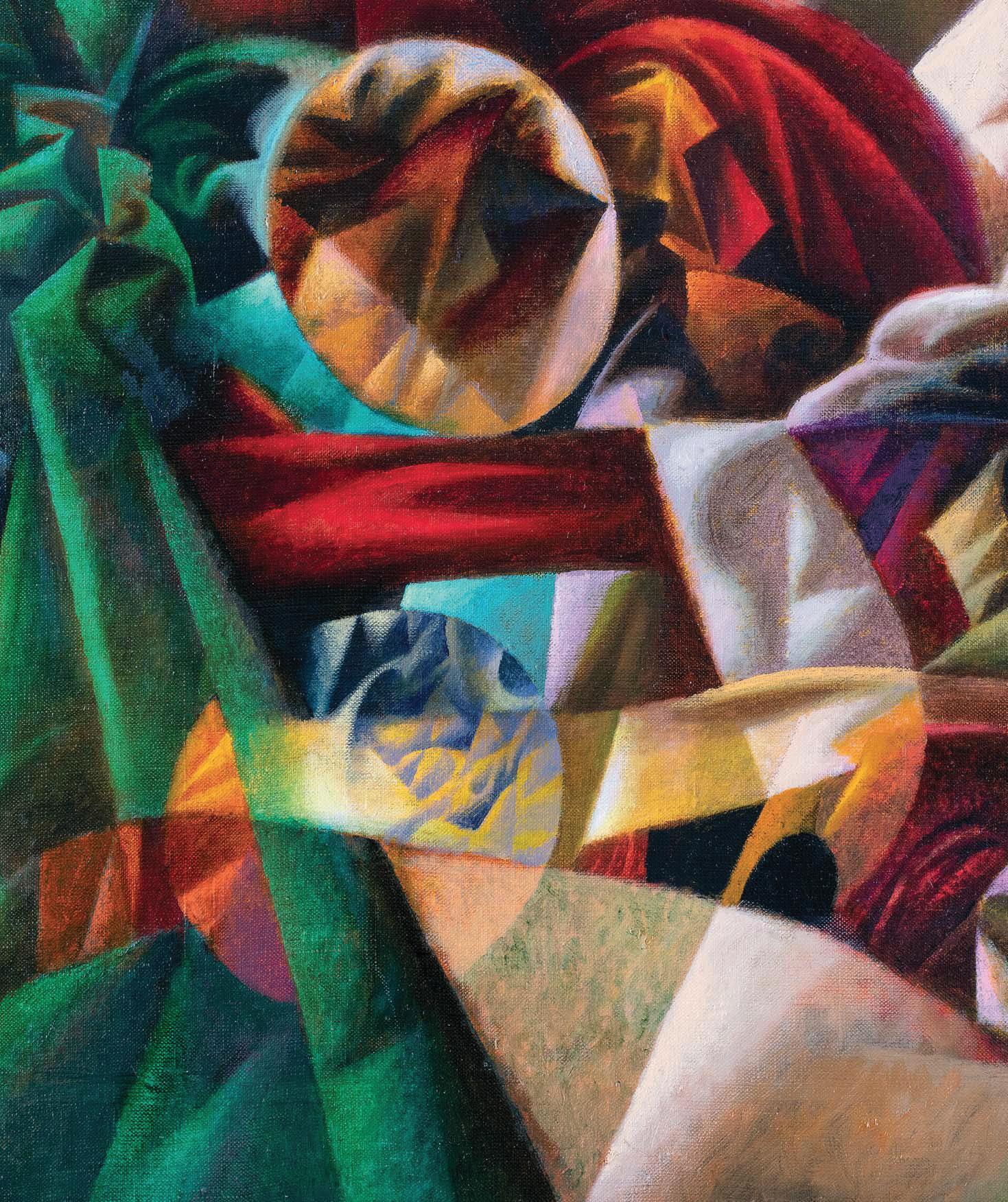


103 EU PHOR I A 2018. , , . 120X85 2018. OI L AN D A C RYLI C O N C AN VA S. 120 85 M
The autumn of our lives is full of abundance. It is time when we feel satisfied. The fruits of our labour are ripe and shiny The colours of autumn are calm and soft. They project contentment.
104 I VA N T U R E T S K Y Y CO LO U R A S L A BYRI NT H
, … … – , , .


106 I VA N T U R E T S K Y Y CO LO U R A S L A BYRI NT H E N E RG Y 2018. OI L AN D A C RYLI C O N C AN VA S. 150 70 M 2018. , , . 150 70

107 S C E N T O F TH E A U T U M N G A RD E N 2018. , , . 150X70 2018. OI L AN D A C RYLI C O N C AN VA S. 150X70 M

108 I VA N T U R E T S K Y Y CO LO U R A S L A BYRI NT H W O M A N O F A MB E R 2018. OI L AN D A C RYLI C O N C AN VA S. 73X 92,5 M 2018. , , . 73X92,5

Musical tunes inspire my colour compositions. They lead me to the invention of new shapes, rhythms and textures. I tr y to express music in colour
110 I VA N T U R E T S K Y Y CO LO U R A S L A BYRI NT H
, , .
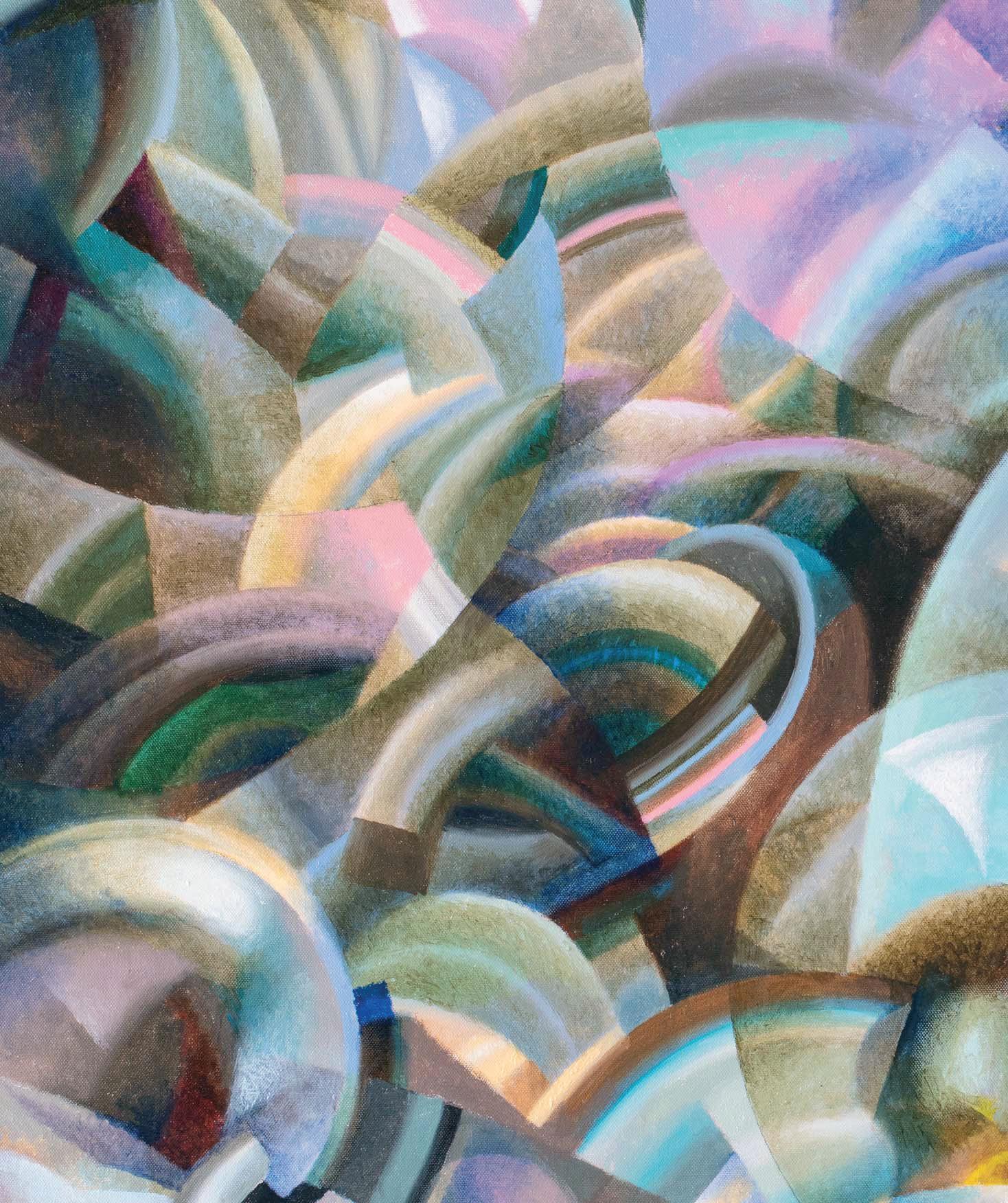

112 I VA N T U R E T S K Y Y CO LO U R A S L A BYRI NT H J A Z Z R H Y THM S 2018. OI L AN D A C RYLI C O N C AN VA S. 170 X 120 2018 M , . 170X120

113 FRO M TH E D E PTH S 2019. OI L AN D A C RYLI C O N C AN VA S. 180 120 2019 M , , . 180 120

114 I VA N T U R E T S K Y Y CO LO U R A S L A BYRI NT H « » E NIG M A FRO M TH E SE RI E S “ I TA L I A N D I A RY ” 2019. , , . 150X70 2019. OI L AN D A C RYLI C O N C AN VA S. 150X70 M
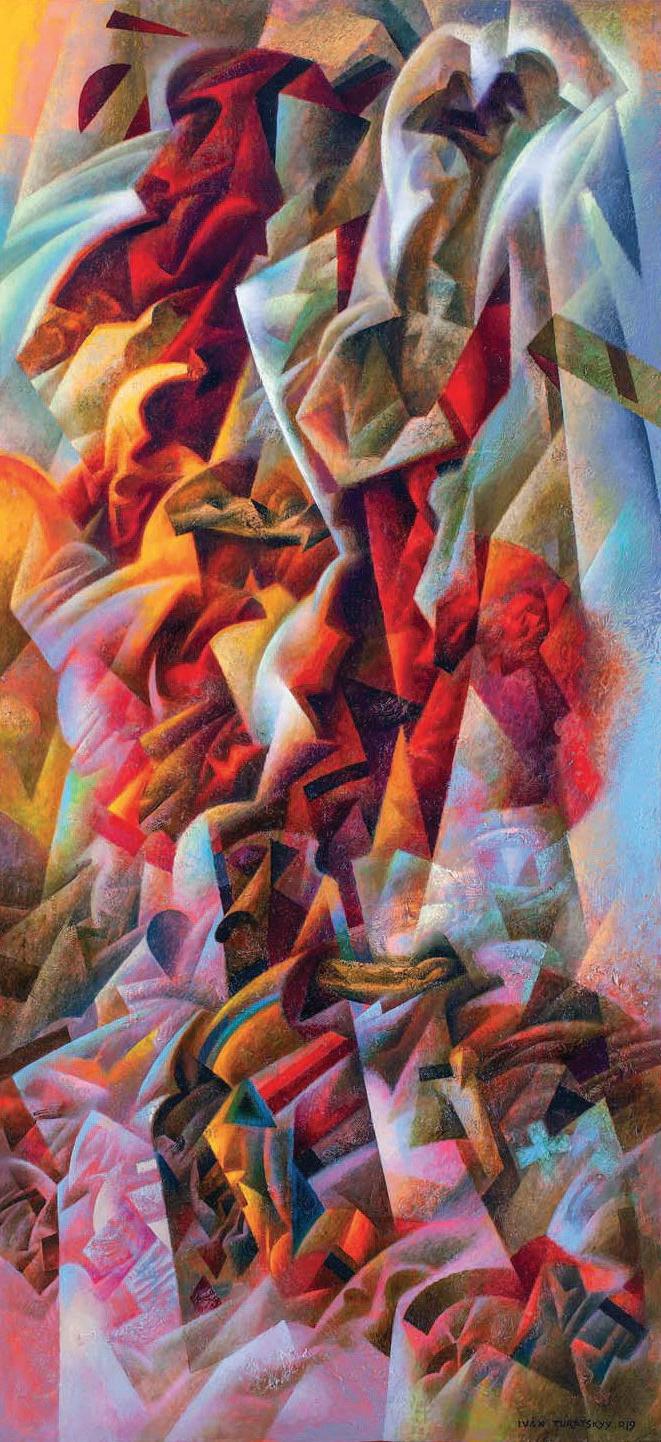
115 I I « » FR A GM E N T S I I FRO M TH E SE RI E S “ I TA L I A N D I A RY ” 2019. , , . 150 70 2019. OI L AN D A C RYLI C O N C AN VA S. 150 70 M

116 I VA N T U R E T S K Y Y CO LO U R A S L A BYRI NT H E N TR A NC E I NT O U NKNO W N 2019. OI L AN D A C RYLI C O N C AN VA S. 150 70 M 2019. , , . 150 70

117 –« » FORG O T T E N FIG U R E – LIK E A DR EA M FRO M TH E SE RI E S “ I TA L I A N D I A RY ” 2019. , , . 150 70 2019. OI L AN D A C RYLI C O N C AN VA S. 150 70 M
I always see solutions in colour and I always focus on colour. Colour is the basis of all my paintings because colour is above time. I experience the correlation between different rhythms, shapes, textures, and colours as music. Ever y composition produces a cer tain tune for me. I therefore greatly enjoy working with the musical themes.
118 I VA N T U R E T S K Y Y CO LO U R A S L A BYRI NT H
. , – . , , , , , , ’ .


120 I VA N T U R E T S K Y Y CO LO U R A S L A BYRI NT H FIR E RIFFL E S FRO M TH E SE RI E S “AW A K E NIN G ” « » 2019. OI L AN D A C RYLI C O N C AN VA S. 120X85 2019 M , , . 120X85
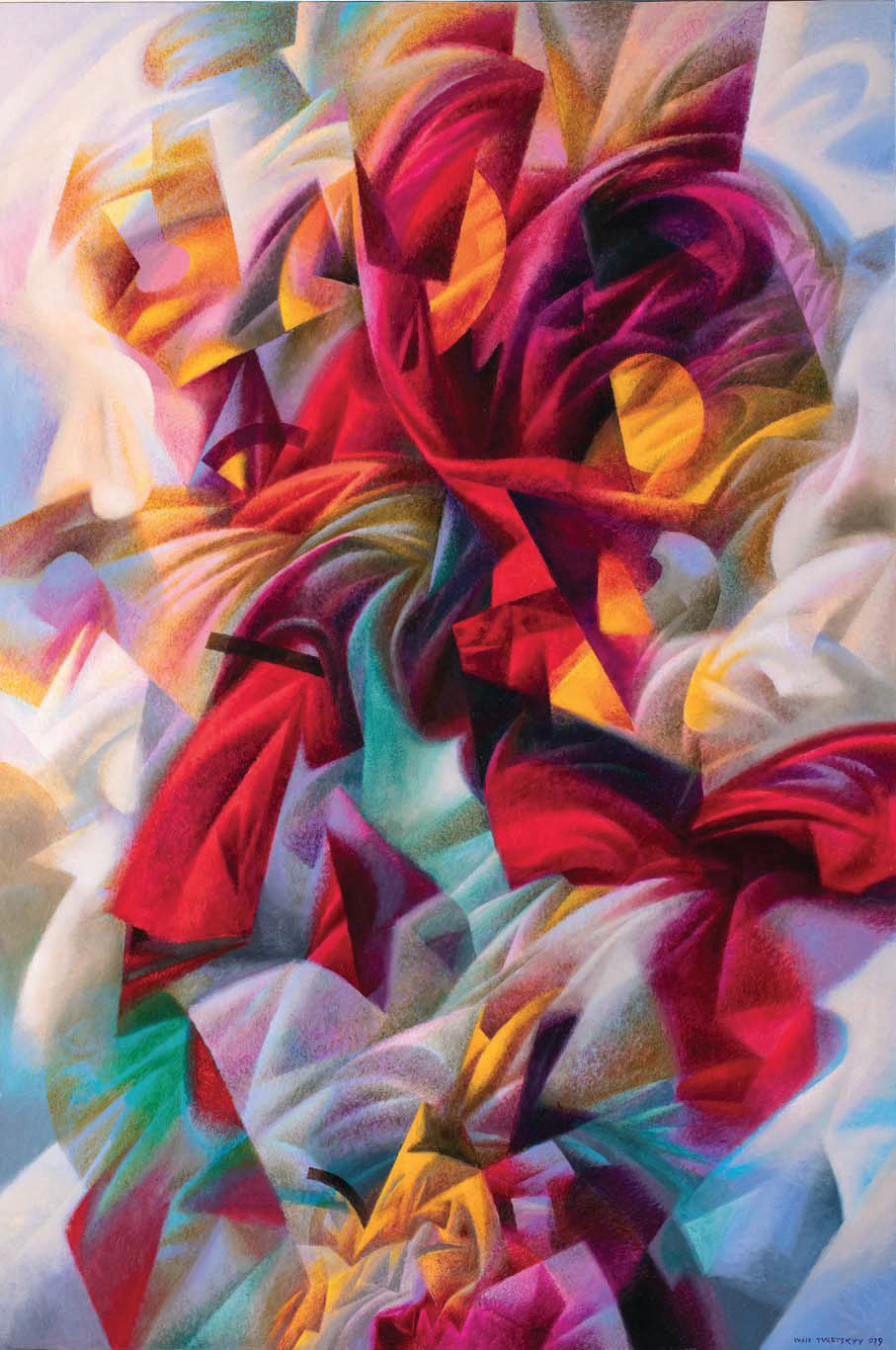
121 SA IL S O F TIM E 2019. OI L AN D A C RYLI C O N C AN VA S. 180 X 120 2019 M , , . 180X120

122 I VA N T U R E T S K Y Y CO LO U R A S L A BYRI NT H B AT TL E O F ID EA S 2019. OI L AN D A C RYLI C O N C AN VA S. 145 128 M 2019. , , . 145 128


124 I VA N T U R E T S K Y Y CO LO U R A S L A BYRI NT H T W ILIG H T B E FOR E D AW N 2019. OI L AN D A C RYLI C O N C AN VA S. 150 70 M 2019. , , . 150 70

125 SU N D U N E S C 2019. OI L AN D A C RYLI C O N C AN VA S. 150 100 2019 M , , . 150 100

126 I VA N T U R E T S K Y Y CO LO U R A S L A BYRI NT H F EE L S LIK E F LYIN G 2019. OI L AN D A C RYLI C O N C AN VA S. 145 128 M 2019. , , . 145 128
The action in the labyrinth is never static. Each exit signifies a new entrance, each step is a transition to the future, ever y end is a new beginning, and so to the infinity.
127
. , , – … .

M E : LOOKIN G B A C K
My parents’ apar tment was located in the city centre. At that time the city was still called Stanislaviv. Now it is called Ivano-Frankivsk, the ancient city, the beauty of which has since been disfigured by modern faceless architecture. We lived as a big family – my mother, my father, my grandfather Fedir, my grandmother Maria and us – four young kids. The apar tment was decorated with antique furniture: a fantastic old cabinet, the chairs by the famous Austrian furniture designer Thonet, a huge librar y, and many works of ar t on the walls, some painted by my father and some by his friends.
129 . , – . , , –, , , . : ,
’ ,
Thonet.
I VA N T U R E T S K Y Y, LVI V, A U G US T 2019 2019











130 I VA N T U R E T S K Y Y CO LO U R A S L A BYRI NT H
My parents, Vasyl and Olha Turetskyy, were artists. At the end of the 1940s they, just like most of the Ukrainian academic and cultural elite, were thrown by Stalin into the Siberian camps. They were formally charged based on planted evidence supporting anti-soviet activity. I was born in the settlement for prisoners in the city of Krasnoyarsk on the 17th of August 1956. His Beatitude Patriarch Josyf of Kyiv –Halych and all Rus, also known as Josyf Slipyj, baptized me. He also happened to have been serving a term for anti-soviet propaganda and knew my parents. When I was one month old, my father drew my rst portrait with a pencil on a small piece of paper and sent it back to our family in Ukraine so that they would know what I looked like
A couple of years a er Stalin’s death, my parents were released from the camp and settled in Stanislaviv. Both then worked in the Ivano-Frankivsk regional drama theatre. My father worked as the art director of the theatre and my mother as the deputy manager of backstage production. I had two brothers, Volodymyr and Bohdan, and an older sister, Maria. My brothers and I were passionate about drawing and making things from clay. We copied absolutely everything and anything that would grab our attention. We had almost industrial amounts of plasticine at home. Moreover, we learned how to make the plasticine in the colours and shades that were not commercially available. We mixed it with oil paints and kneaded it until the colour was right – a technique which we brorowed from the theatre’s properties workshop.
131 . 40, , . , , , 17 1956 . , ’ , , . ., , – . –, , –. , . ! . , , , . , . , , , , ’ , . , . 2 . , , .
We used books from my father’s library to learn about ancient worlds, medieval castles, palaces, interiors and many other things. From the books we used images to make variousgures and objects. It was very precise and exquisite cra smanship. All our objects were designed to accommodate a humangure of 2 cm in height. For example, we used the tip of the needle to assemble Roman warriors and the soldiers of Napoleon from plasticine.
I grew up without any particular duties in my life except for school. Soviet school at that time was so preoccupied with the nuclear war between the USA and Russia that we decided to bury treasure in our yard for the people to remember what a wonderful world it had been. I buried a Roman commander, a knight, a Napoleonic soldier and a miniature copy of Andre-Charles Boulle’s cabinet. The cabinet was most precious. It took me a very long time to reproduce all of the decorative elements. Whilst a student I also studied at the art school.
My favourite media were gouaches and watercolours. They were fast-dr ying and were good for drawing small ornaments and details. My favourite ar tists at that time were Mikhail Vrubel and all of the ar tists from the Mir Iskusstva movement, such as Benua, Bakst and Somov
My carefree childhood ended when Inished school. I had big plans for my future and they required organisation and planning. In 1972, I entered the metal design faculty of the Vyzsnytsia art school. Right a er my enrolment the school changed its prole from ne arts to ethnic design. I found ethnic design to be very limiting and boring and in 1973 I moved to Lviv. Lviv art school had its own unique style, a modern outlook and a very speci c emphasis on composition. I had freedom to create outside of the ethnic or any other limits.
Polish, Romanian and Hungarian art magazines formed my style and my understanding of contemporary art. Books on modern and contemporary art were forbidden in the USSR. My parents had subscriptions to all of the art magazines available at that time. Romanian magazine ARTA and Polish magazine PROEKT were particularly interesting. My father knew the Romanian language and occasionally helped me with translations. I was very impressed by one of the oldest Polish magazines titled Przekroj. It had a very peculiar printing technique that was part of the magazine’s design. The paint sometimes did not exactly match the images and created the same eect as in Andy Wahol’s portraits. I also experimented with the inserts inside the Polish women’s magazines that had sewing patterns in them. It was exciting to colour between the lines, creating abstract labyrinths and mystical codes A er I had worked on them, it was hard to imagine that the transformed images had previously been sewing patterns!
In 1976 I was enrolled into the Lviv Institute of Art and Design. There I met my future wife, Natalka. She was extremely beautiful and a very good artist. I could not help but fall in love with her. In 1978 we got married. In the same year the Soviet government decided to collectively move everyone who lived in basements into apartments. This was due to the 1980 Olympic games where the Soviet Union wanted to showcase the prosperity of its citizens. We didn’t mind the change as the basements were then freed for use as artists’ studios, and there were plenty of them! Myself and Natalka were lucky to get a studio at one of the central locations on Mendeleeva Street in Lviv. By that time we already had two children – Lukyan and Olha. Natalka had to spend more time at home while I continued to work in our studio.
132 I VA N T U R E T S K Y Y CO LO U R A S L A BYRI NT H
133 ’ , , –. ' –, . ’ , , . ’. , , . , , , . , . , ,. ’ « », , , . . . , 1972 . , , . 1973 . , , . . , 60-70 . , , . ARTA PROEKT. , , . Przekroj. , . , , .. , , . , . 1976. , , . , . 1978 80-, , , .
My interest for collecting books and antiques grew and this gave me a chance to meet many interesting dealers and collectors of that era. My studio gradually transformed into an Aladdin’s treasure dungeon. I had an incredible amount of books and objects that I stored in specially created niches. The ceiling was covered in Baroque cherubs, showcasing my collection of the wooden sacred sculptures. Very quickly my studio turned into the meeting point for the Lviv art world. I had so many visitors that sometimes it was hard to explain that I needed to go home.
The Soviet government did not allow exhibitions of my works; they were too avant-garde. Only in the 1980s, at the end of Perestroyka, was I granted an exhibition
At the beginning of the 1990s the iron curtain fell. At that time, the amount of Western collectors and visitors to Ukraine was overwhelming. I sold almost everything I had and only photographed some of the art works. It was the end of the Soviet era and the end of the era of Soviet art.
In 1991 the parliament of Ukraine announced an open call for the design of Ukraine’s State Coat of Arms My hobby of heraldry gave me a chance to apply. At that time I worked in cooperation with the historian Andriy Grechylo. Our project consisted of the design of a full version of the Coat of Arms and the shorter version of the same. They both were based on the state symbols of the Central Council of Ukraine of 1918. The shorter version was based on the idea of the famous graphic designer Vasyl Krychevskyy. It included the trident of the ruler of Kievan Rus, Grand Duke Volodymyr the Great and the wreath around it symbolising the continuity of Ukrainian statehood. The full version had elements symbolising various periods in the history of Ukraine. My design for Ukraine’s Coat of Arms was selected from among 300 other submissions and I was invited to Kyiv to work on the project together with a group of my colleagues – artist Olexiy Kohan and historian Andriy Grechlylo. It was an unpaid project and we even had to bring our own materials from Lviv to Kyiv. On the 19th of February 1992 our trident design became the o cial Coat of Arms of Ukraine. I am very happy to have worked on this project, although I do not consider it to be the main theme of my artistic career.
By that time my brother Volodymyr, Andriy Grechlo, Ivan Svarnyk and I had already designed the Coat of Arms for the city of Lviv in 1990. The Coat of Arms of the city of Lviv was therst Ukrainian modern Coat of Arms that was rid of Soviet attributes, instead showcasing symbols of an independent Ukrainian state. And it was in the Lviv Coat of Arms that we used the trident for therst time in almost a century.
My life has always been of full of wonderful people. While working on the Coat of Arms I met the head of the Ukrainian Philatelic Society of Austria (UPSA), Mr. Borys Yaminsky, and we became good friends. He invited me to design stamps and envelopes for the UPSA, which I gladly did. It was a very productive collaboration. We even presented a series of works to the Chancellor of Austria Mr Viktor Klima Foreign diplomats and ambassadors enthusiastically bought my works. Natalka and I started travelling across Western Europe and the USA, and especially to Vienna, exhibiting our art. While in Vienna, I fell in love with Viennese fantastic realism, which had a big in uence on my art later in life. I feel also extremely honoured to have met the curator of the Graphics Section of the Marlborough Gallery in
134 I VA N T U R E T S K Y Y CO LO U R A S L A BYRI NT H
At that time, I became greatly influenced by the heraldic ar t of Georgiy Narbut. I began studying emblems, symbols, secret codes, and alchemical formulas. I was already on my path in my own labyrinth. I worked mainly with gouaches, watercolors, gold and silver
135 . . , 1980 , . –’ , ., , , . , , . , , –’ . . , . , , , , , . 80. 90- . . , , . . 1991 . , . 1918 . , , . ’ . 300 . , . –, , , . . 1990 , , . 1990 ’ . , ( ) ’ .
New York whom I later befriended. This friendship played a big role in my perception and understanding of contemporary art.
I had been collecting art since my college days and wanted to set myself up as an art-dealer. In 2004, three of my friends and I resolved to open our own art gallery. We called it «Three crowns». The gallery was located at the heart of the town’s artistic district called “Virmenka” at Virmenska Street, 33. Atrst, we had only 40 square metres of space but by 2008 we already occupied the wholeoor in the old building. Between 2004 and 2008 many art objects and antiques passed through our hands. It was extremely exciting. The work in the gallery took up almost all of my time, depriving me of my creative work in the studio. By 2008 I decided to close the dealership and return to my studio where I continue to work today.
Nowadays, modern technologies in art are developing very rapidly but I still prefer to work with oils and canvases. It is important for me that art speaks for itself. Image is of the utmost importance to me. I have a lot of plans for the future. My children and my grandchildren continue our artistic dynasty. My son, Lukyan, works with calligraphy and fonts. My daughter, Olha, works with coloured glass My granddaughter, Martha, has just started at art school and wants to be became a painter. I have great enthusiasm for work. Every day is a new beginning.
136 I VA N T U R E T S K Y Y CO LO U R A S L A BYRI NT H . , . , . , .Marlborough Gallery, . 2004 ’. , , 33, ’ « ». 40, 2008 . , . , , , , . 2008 , . ’ , . , . . . , , ,. ’ , –. , . . .














137
XHIB I TION S
Art exhibition "Ukrainian contemporary art". Toronto, Canada
international biennale "Impreza"
Ivano-Frankivsk, Ukraine
Personal exhibition in the gallery "Artes".
Lviv, Ukraine
international biennale "Impreza"
Ivano-Frankivsk, Ukraine
Personal exhibition in Museums of ethnography and artistic cra s. Lviv, Ukraine
International Art Festival. Kyiv, Ukraine
Personal exhibition in Vienna City Hall, Emblem hall.
Vienna, Austria
Europe Art. Geneva, Switzerland
Europe Art. Geneva, Switzerland
Personal exhibition. Bank. Vienna, Austria
Modern sacred art of Ukraine
Lengenfeld, Austria
Personal exhibition in the gallery-salon "Porsche".
Vienna, Austria
Exhibition in the gallery "Hermes". Lyon, France
Exhibition in the gallery " ". Vienna, Austria
International plein air "Zelwa". Poland
International plein air "Zelwa". Poland
Lviv Autumn Salon. Lviv, Ukraine
Kirovograd Art Museum "Art family" Kropivnitsk, Ukraine
Odessa Art Museum "Art family". Odessa, Ukraine
International plein air "Zelwa". Poland
Museum of book and typography of Ukraine
"Art family". Kyiv, Ukraine
International plein air "W Sierpcu". Poland
International plein air "Olkush". Poland
Art exhibition dedicated to the Independence Day
Kyiv, Ukraine
International festival of artistic colonies
Kazimierz-Dolny, Poland
Art Expo. New York, USA
Exhibition "Cabinet". Gallery "Veles" Lviv, Ukraine
Project Gal-Art "Dynasty". Kharkiv, Ukraine
Personal exhibition "Colour reincarnation". Gallery "Green sofa". Lviv, Ukraine
Personal exhibition "The Magic Garden"
Gallery "Veles". Lviv, Ukraine
Art-Intergration. Ukraine Lviv / China Beijing
Personal exhibition "Colour as a labyrinth"
Business center "Leonardo". Kyiv, Ukraine
Artistic spring salon. Lviv, Ukraine
Personal exhibition "Colour as a labyrinth"
Gallery Portal 11. Kyiv, Ukraine
Artistic spring salon. Lviv, Ukraine
138 I VA N T U R E T S K Y Y CO LO U R A S L A BYRI NT H
1989 1989 1990 1991 1993 1996 1996 1997 1998 1998 2000 2001 2001 2002 2005 2007 2009 2011 2011 2011 2012 2012 2013 2014 2014 2014 2015 2016 2016 2017 2017 2017 2018 2018 2019 « ». , « », « ». , « », . , , , . , Europe Art. , Europe Art. , . . , , - « » , « ». , « ». , «Zelwa». «Zelwa». . , « ». , « ». , «Zelwa». « ». , «W Sierpcu». «Olkush». . ,,., « ». « » , – « ». , « » « ». , « ». « ». , Art-Intergration. Ukraine Lviv / China Beijing « » « ». , . , « » Portal 11. , . ,
TABL E O F C O N TE N T S
139
Ma ster of ligh t 19 89- 200 9 20 10- 201 3 20 14- 201 6 20 17 20 18- 201 9 Bet ween hi sto ry and imaginatio n Me: Lo oking bac k Exhibi ti on s 1 1 1 6 3 6 5 8 7 2 9 4 9 7 1 29 1 38 11 16 36 58 72 94 97 12 9 13 8 19 89- 200 9 20 10- 201 3 20 14- 201 6 20 17 20 18- 201 9
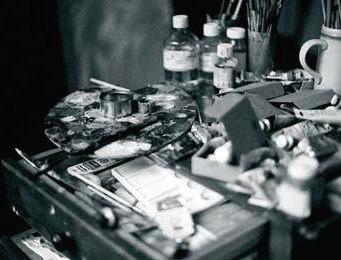

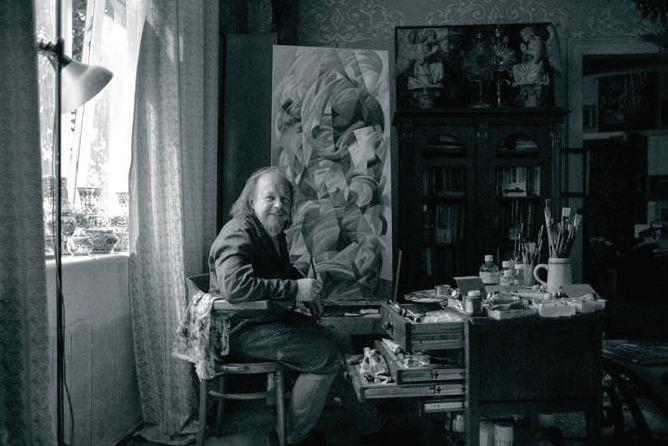
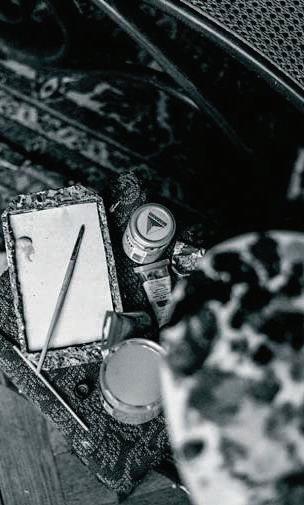






140 I VA N T U R E T S K Y Y CO LO U R A S L A BYRI NT H







141
A C KNO W LEDGE M E N T S
This book is published by Galler y Por tal 11 (Kyiv, Ukraine)
We would like to express our deepest respect and gratitute to the patrons of this publication:
Mr Danylo Volynets
Mr Dmytrii Drebot and Mrs Ir yna Tykhonova
Mr Oleksii Kur ylyshyn
Mr Andrii Kuchma
Mr Denys Moskal and Mrs Lyubov Moskal
Mr Volodymyr P ylypenko and Mrs Oksana P ylypenko
Por tal 11 ( , )
142 I VA N T U R E T S K Y Y CO LO U R A S L A BYRI NT H
, : ww w .por t al11 c om u a w w w .p or t al11 com u a





































































